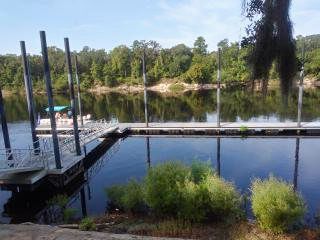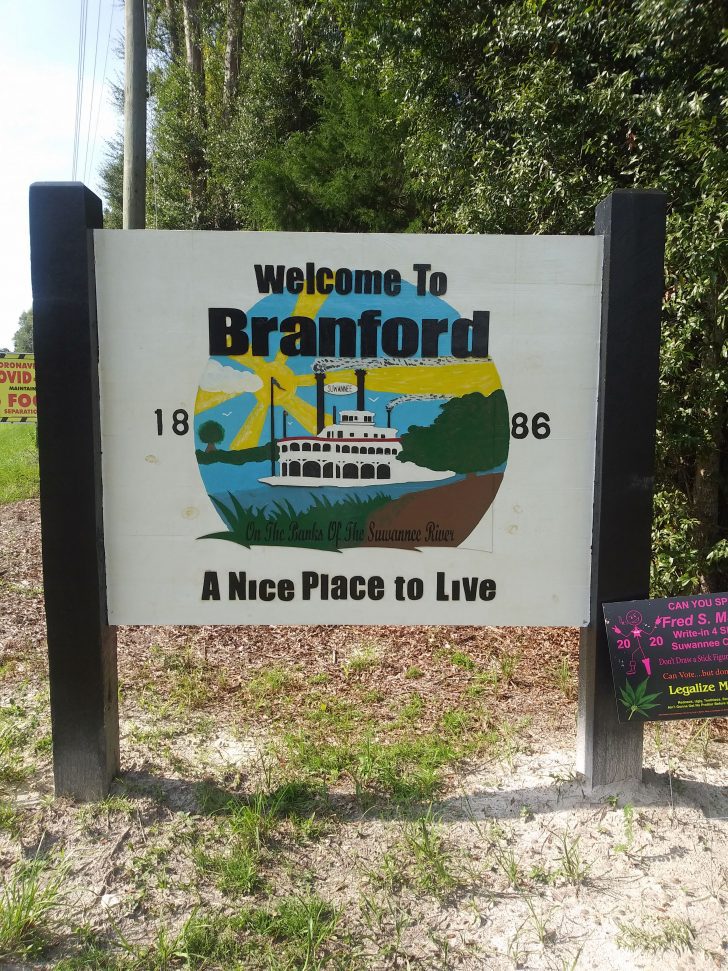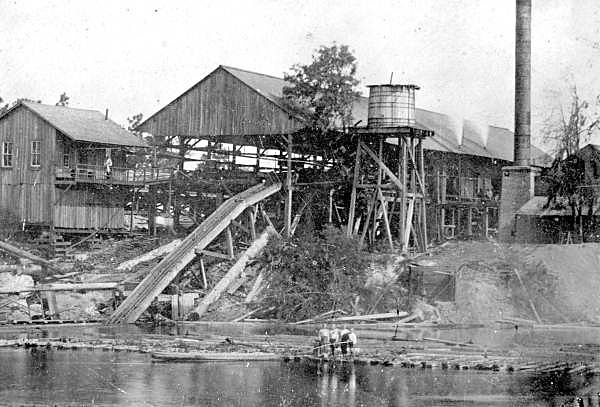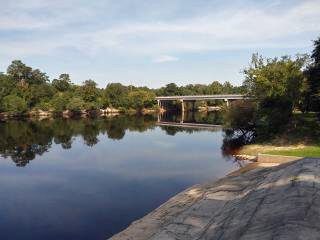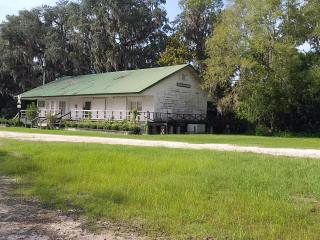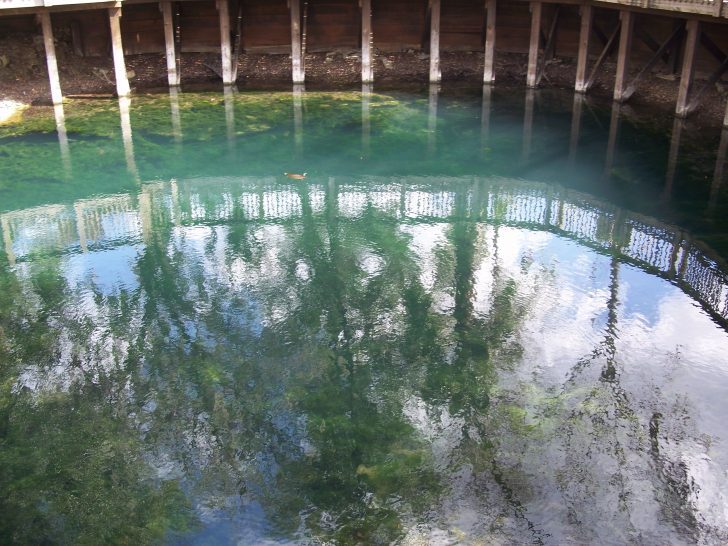ON FLORIDA’S WATERS
Kevin McCarthy
“Branford on the Suwannee”
CAPTIONS
Floating dock at Branford
Entrance sign for Branford
Branford Mill in the 1870s
Bridge over Suwannee at Branford
Old railroad depot at Branford
Branford Springs
One of the advantages of writing guidebooks to rivers, is that I visited many sites, for example, along the Suwannee by water, and later by land. The town of Branford is one of those sites. A relatively small town, its population is maybe 725, but it has an interesting history, a modern bike path, and an impressive floating dock.
Branford takes its name from railroad developer Henry Plant, who was president of the Savanah, Florida and Western Railroad (now the Atlantic Coast Line) and who named the town Branford, after a Connecticut town of the same name, where he had once lived. That New England town may have been named after Brentford, England. The Florida town, originally called Rowland’s Bluff, was the site of a ferry crossing. Officials incorporated the town in 1886 and made it into an important steamboat landing up until the early 1900s. Spanish missionaries had long ago established the mission of Ajoica, a few miles northeast of Branford.
The Florida town is today the northerly limit for large boats, for example, houseboats from Suwannee near the mouth of the river. The town was also, for all practical purposes, the northerly limit for steamboats that plied the river in the nineteenth century with passengers and cargo for the towns along the way and inland. At least one enterprising steamboat captain took his large vessel to White Springs, but the usual shallow depth of the river above Branford made such trips very rare.
Ironically, steamboats carried railroad-building material up the river to places like Branford in the nineteenth century, material that would eventually put the boats out of business, as the railroad network spread across the country. For a while, both means of transportation co-existed. Steamboats, in fact, would take passengers to places like Branford, where they could connect with the railroad, which took them further on their journey, and vice versa.
From Branford south, ground-water contributes seventy percent of the flow of the river, while surface run-off contributes thirty percent. During floods, the springs actually reverse their flow, going back into the aquifer. Below Branford, the Santa Fe River joins the Suwannee as the last of three rivers to add to the main river’s flow and strength. Branford Springs is a second-magnitude spring, with a flow of 17 cubic feet per second.
The floating dock at Branford has very tall pylons that allow the dock to rise during flood times and fall during normal river flow. The nearby former railroad depot has been converted into other, modern uses and stands near a bicycle path that also goes near the river. The old mill, as seen here in a photo from the 19th century, shows the long chutes that could carry lumber down to the river, where workers could float the logs down to other towns.
Kevin McCarthy, the author of “Suwannee River Guidebook” (Pineapple Press, 2009), can be reached at ceyhankevin@gmail.com.
